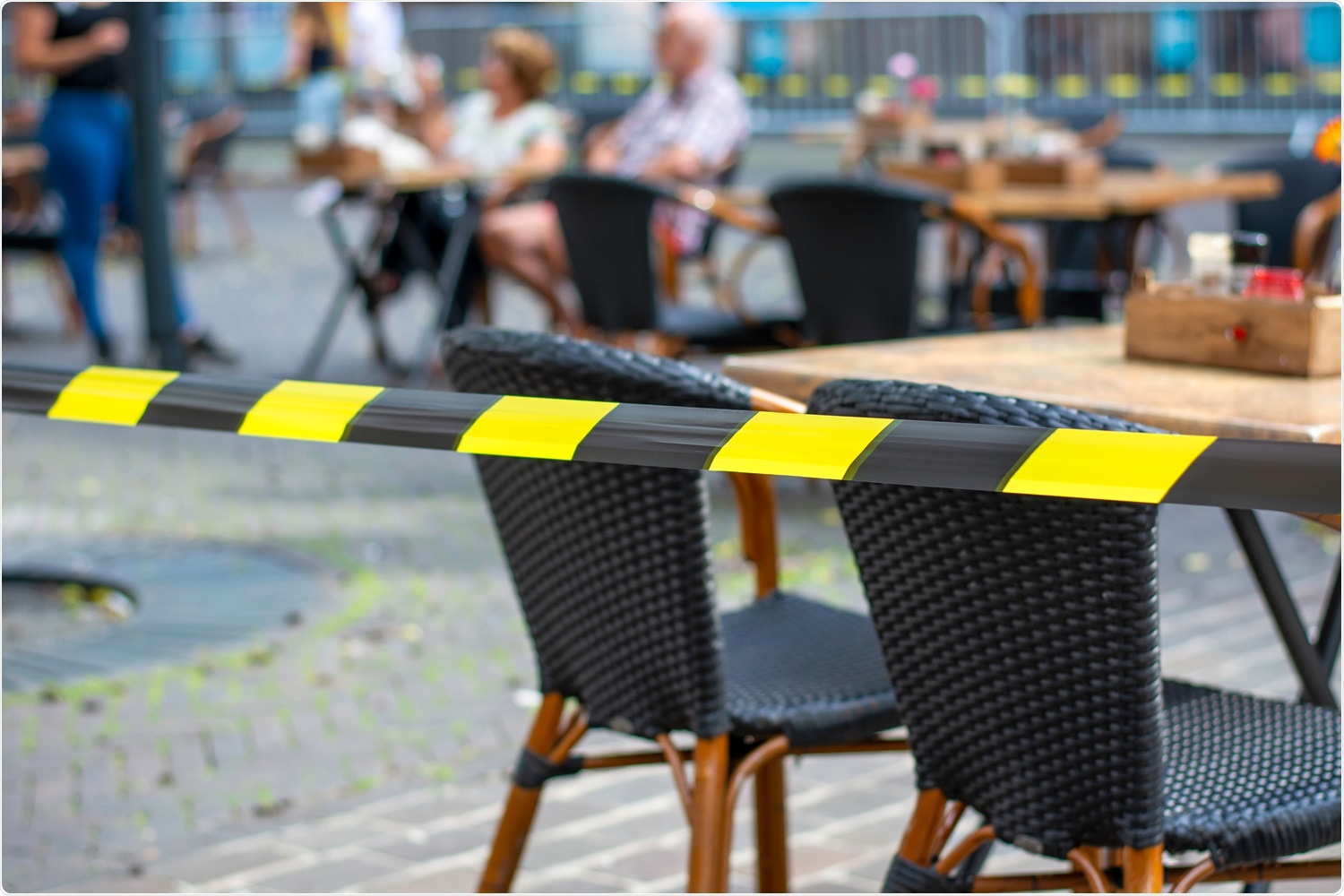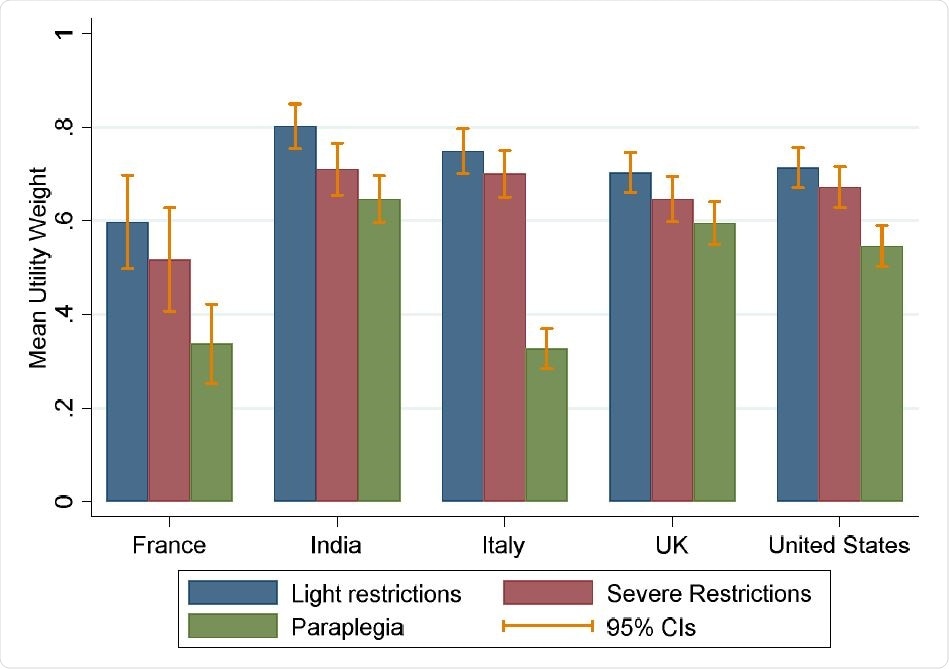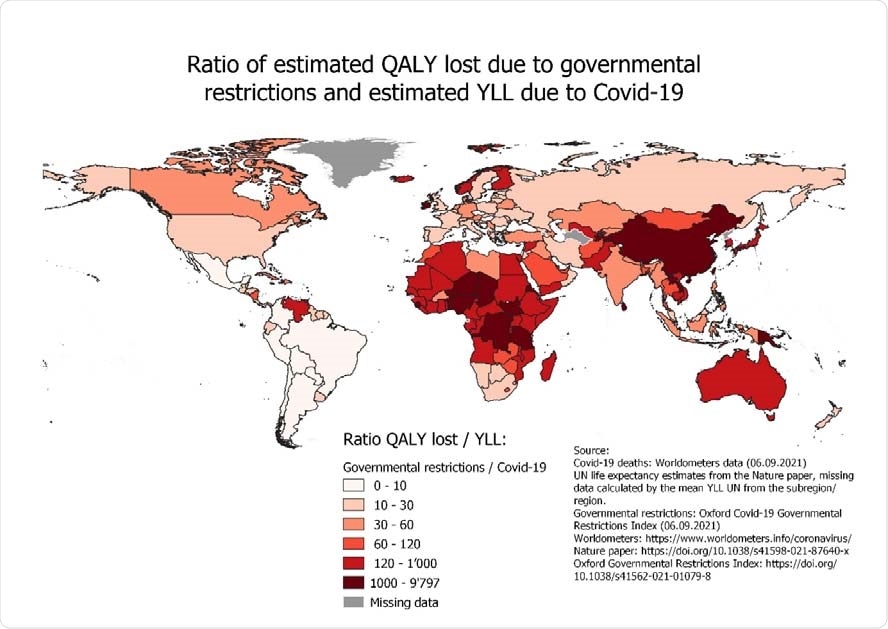Resesarch gauges reductions in the quality of life during COVID-19

Besides the unprecedented social, economic, and health systems disruptions, the coronavirus disease 2019 (COVID-19) pandemic has incurred a loss of an estimated 20.5 million life years. In addition, the pandemic has imposed a significant public health burden impacting individuals' quality of life and mental health.
The results of a survey were published on the medRxiv* preprint server, the purpose of which was to assess the relative well-being of the population under Covid-19 restrictions – through 952 survey respondents from France, India, Italy, the UK, and the US.

Participants were asked to complete a series of time trade-off questions related to living with light restrictions – masks, restricted access to restaurants and restricted international travel, and severe restrictions – light restrictions plus home office, home-schooling and restrictions to private gatherings. Respondents were also asked to specify the relative utility of life with paraplegia—as a commonly used reference point.

The results depicted that the average estimated utility was 0.71% for light restrictions, 0.65 for severe restrictions, and 0.49% for paraplegia. Quality-adjusted life years (QALY) utility weights were relatively similar across countries. Meanwhile, the lowest average utility weights were found in France, and the highest weights on average in India.
Globally, a total loss of 2,980 million QALYs has been estimated until now due to government-imposed light or severe restrictions as of September 6, 2021. The highest absolute burden was concentrated in upper and lower-middle-income countries, owing to the large populations along with the longer average duration of restrictions.

Additionally, a discrete choice experiment (DCE) was conducted to quantify the respondents' willingness to pay (WTP) to avoid specific restrictions. Random utility models were utilized to estimate (implicit) valuations of each restriction.
The results revealed that subjects were willing to part with 22% of their annual salary to avoid school and daycare closures and 21.8% of their annual salary to avoid closures of restaurants, bars, and clubs. The lowest WTP was observed for removing travel restrictions (7%) and wearing masks in public (2%).
Discussion
Despite progress in the COVID-19 vaccination drive, non-pharmaceutical interventions remain a key and even the primary management strategy in many low-income countries for controlling the spread of this virus.
The findings of this survey showed that the societal burden of non-pharmaceutical measures accounts for nearly three billion QALYs as of September 6, 2021—which corresponds to 38 times the estimated number of life-years lost due to the pandemic to date.
The societal costs of any restrictive measures taken by governments may be more significant than reported. Most citizens would be willing to lose a substantial fraction of their incomes to avoid several of these measures in the future.
Some measures were identified as minor burdens, for instance – wearing masks in public spaces or restrictions on international travels by most participants, yet they effectively reduced disease transmission. However, individual and social losses due to other measures, such as closing schools, bars, and restaurants, were deemed substantial.
Questions were framed in different ways, such as utility of these restrictions with COVID-19 and outside of COVID. Surprisingly, very similar responses are obtained with both types of framing, probably because often subjects justified these measures as necessary and assigned lower disutility. This was likely as they could not expect such restrictions sans COVID.
Another concern was that the respondents might not be able to quantify the relative utility of life with restrictions precisely. Nevertheless, the magnitudes reported here—about a quarter of life quality lost due to light restrictions and about a third due to severe restrictions—were deemed reasonable. Both mild- and severe restrictions were preferred to paraplegia. The average utility weight of 0.49 for paraplegia appeared to be well-aligned with estimates reported in the literature.
The present study was a novel attempt to quantify the societal impact of COVID-19 restrictions at national and global levels. The results underscore the high societal cost of non-pharmaceutical interventions used to prevent the spread of infectious diseases like COVID-19 in terms of the quality of life lost.
*Important Notice
medRxiv publishes preliminary scientific reports that are not peer-reviewed and, therefore, should not be regarded as conclusive, guide clinical practice/health-related behavior, or treated as established information.
- Fink, G., Tediosi, F., & Felder, S. (2021). Global Burden of Covid-19 Restrictions: National, Regional and Global Estimates, medRxiv preprint, doi: 10.1101/2021.09.21.21263825, https://www.medrxiv.org/content/10.1101/2021.09.21.21263825v1
Posted in: Men's Health News | Medical Research News | Women's Health News | Disease/Infection News
Tags: Coronavirus, Health Systems, Infectious Diseases, Mental Health, Pandemic, Paraplegia, Public Health, SARS-CoV-2, Virus

Written by
Nidhi Saha
I am a medical content writer and editor. My interests lie in public health awareness and medical communication. I have worked as a clinical dentist and as a consultant research writer in an Indian medical publishing house. It is my constant endeavor is to update knowledge on newer treatment modalities relating to various medical fields. I have also aided in proofreading and publication of manuscripts in accredited medical journals. I like to sketch, read and listen to music in my leisure time.
Source: Read Full Article